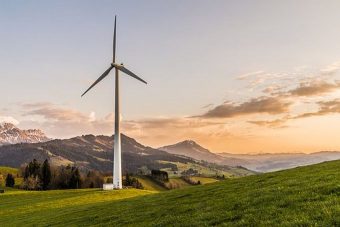
Europe added 6.1GW of new wind power capacity during the first half of the year, prompting optimism that 2017 will prove to be a “bumper year” for the sector, according to WindEurope.
The European trade body’s figures, released yesterday, show a total of 4.8GW of onshore wind capacity was installed from January-June this year, although the added capacity was largely concentrated in just Germany (2.2GW), the UK (1.2GW) and France (492MW).
Offshore installations also saw a flurry of new activity this year, with 18 projects coming online in just four EU Member States – Germany, the UK, Belgium and Finland – accounting for a total of 1.3GW of additional capacity. In the UK alone, 518MW of offshore wind capacity was added in the first half of 2017, just behind Germany which added 641MW.
In terms of investments, €8.3bn of new asset financing emerged in Europe over the first half of the year, with €5.4bn in onshore wind and €2.9bn in offshore wind. However, the offshore wind financing during the first six months of 2017 is down from a record high of €14bn during the same period last year.
And, yet again, the trend for market concentration continued – more than half of total investments in both onshore and offshore wind in Europe were earmarked for Germany, with no offshore investments made at all in the UK, according to the trade body.
WindEurope’s chief policy officer, Pierre Tardieu, said Europe was on track for a good year in wind capacity installations, but that growth was still only being driven in a handful of markets.
“At least ten EU countries have yet to install a single MW so far this year,” Tardieu explained. “On onshore wind, the end of UK Renewable Obligation scheme will lead to even greater market concentration in Germany, Spain and France. On offshore, the level of finance activity is a concern. Although this won’t translate into lower installations for another few years, the industry needs clarity on volumes for the post-2020 period to maintain the current cost reduction trend.
Tardieu called on Member States to come forward as soon as possible with their National Energy and Climate Plans to 2030. “In combination with the three-year auctioning schedule proposed by the European Commission, the national plans will give sorely needed visibility to the wind energy supply chain,” he said.
Source: businessgreen.com



